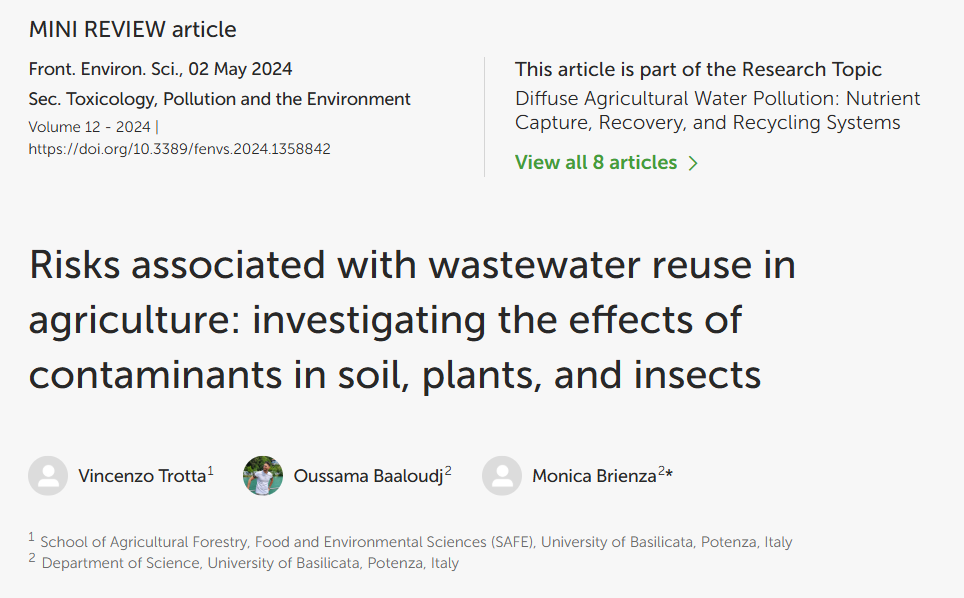
As part of the work developed within the PRIMA-SAFE project, this review article published in Frontiers in Environmental Science offers a critical analysis of the environmental and health risks associated with the reuse of treated wastewater in agriculture. It highlights both the nutritional potential of wastewater and the risks posed by contaminants to soil, plants, insects, and ultimately human health.
Key Findings
- Wastewater irrigation can improve soil fertility and crop yield, especially for short-cycle crops like lettuce and tomato, and reduce the need for chemical fertilizers.
- However, it may also introduce organic pollutants, heavy metals, pathogens, pesticides, and pharmaceuticals, many of which are not completely removed by conventional wastewater treatment.
- These contaminants can accumulate in the soil and crops, alter insect population dynamics, and potentially promote the spread of antibiotic resistance.
- The article emphasizes the presence of N-nitrosamines, a class of carcinogens, in wastewater and their potential impact on both ecosystems and human health.
- Strategies to mitigate risks include advanced tertiary treatments, biological filtration, and the adoption of precision irrigation systems such as drip irrigation to limit direct contact with edible plant parts.
Implications
The authors stress the importance of developing interdisciplinary approaches to manage the safe reuse of wastewater in agriculture, combining insights from environmental science, agronomy, and public health. Addressing regulatory gaps and investing in targeted treatment technologies are key to ensuring long-term sustainability in water-scarce regions.
Reference
Trotta V., Baaloudj O., Brienza M. (2024).
Risks associated with wastewater reuse in agriculture: Investigating the effects of contaminants in soil, plants, and insects.
Frontiers in Environmental Science, 12, 1358842.
DOI: 10.3389/fenvs.2024.1358842

